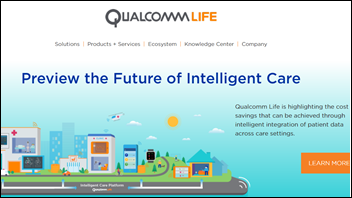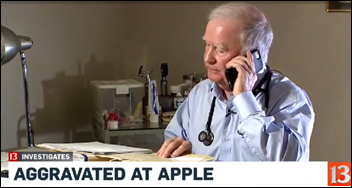I wish I would have known that I would be “judged” on my level of grief after the loss. One of my classmates in medical school committed suicide during the last half of our last year. Even though I wasn’t in his most inner circle of friends (really just his fiancée and a couple of others), we had been on many rotations together and saw each other almost every day, so I took the loss very hard. I started talking to other classmates about collecting for a memorial (our school already had a piece of art in the lobby dedicated to a previous student who also committed suicide) and was quickly approached by the dean, who told me I had overstepped my bounds and that this should be left for his friends to do.
I was shocked, and had no idea that there were different levels of grief and response which one was limited to based on one’s perceived relationship to the deceased. I certainly considered him my friend and I think that not being able to do anything “useful” in response to the loss made it worse for me. Two decades later, I still think about him – seeing him was one of the bright spots of my day, and I think about the loss for the patients who never got to experience his brand of caring and compassion. He would have been an outstanding physician.
We were brand new parents, and my husband was terribly depressed. I didn’t know it. I knew he was worried about his work situation, money, our living situation, and he didn’t like me being the primary provider. I didn’t know that as a new dad, he worried he that he’d turn out like his paranoid schizophrenic, alcohol-abusing bio-father despite the fact that he never consumed alcohol. I had no idea about the depth of his worry, struggles and depression. Certainly, no idea he was dealing with suicide-level depression – or that he’d stopped going to his crappy job during day and instead, went to his parent’s place where no one was, and that he’d pull a gun from the cabinet and contemplate killing himself. I wish I’d known what everyone wishes: That I knew. That he spoke up.
My husband didn’t end up taking his life. Two things happened that day: One, my cousin, who worked at the same place my husband had been called to see if he was feeling okay, so I knew something was up. (He hadn’t been to work in over a week.) I’m glad someone noticed he wasn’t there! Two, that day, my husband had a gun in his mouth. He heard a voice, that he was sure was God, tell him not to do it. That he was loved and needed, and that he’d be causing more pain than he’d take away. He came home, confessed/cried (without me asking where he’d been), and then we talked with family and our pastor.
That was nearly 14 years ago. He found a job he liked not long after. Our kids are 13, 10 and 1, and he’s now a stay-at-home dad for our youngest, with only gratitude for getting to stay home vs. feeling “less of a man”. It was a turning point for us in terms of depth of our relationship. We always communicate, and I don’t worry that he’d do that to me/us, and I haven’t since those early days. I wish they knew things aren’t as bad as they seem, and they can get even better.
People perceive and react differently, but these have been helpful.
https://www.ted.com/talks/andrew_solomon_depression_the_secret_we_share
https://www.ted.com/talks/kevin_briggs_the_bridge_between_suicide_and_life
I wish I’d known how incredibly cruel people can be in the wake of a suicide, as I witnessed the “friends” of a woman I know gossip about her and blame her for her husband’s suicide. It costs exactly nothing to offer condolences, mow someone’s lawn, help tidy their house and wash dishes, and keep your base thoughts to yourself. Conversely, you gain nothing by spreading malicious gossip about a family in anguish.
I don’t think it can ever be overstated – talk about it. Talk about anxiety and depression and that it can happen to anyone. It’s okay to have it, it’s okay to talk about it, it’s okay… Maybe your anxiety/depression isn’t as severe, but you should still talk about it. You’re not on an island, you’re not alone. We all have it, whether we want to admit it or not.
Two things:
The emotional bleakness that drives one to attempt suicide really will go away
When people do die by suicide their family and friends never get over it.
Over the years, I’ve lost several acquaintances to suicide and I wish they had chosen to reach out for help. Unfortunately, I’ve felt the sense of loss and tragedy when the lives of decent and talented individuals are ended prematurely. I’ve also seen the way in which it haunts their family, their close friends and any treating health care professionals. Sometimes that’s what suicidal individuals want — to make others suffer, out of anger — but plenty of others who care about the person will suffer as well. Unlike other kinds of grief where the sadness subsides and good memories predominant, with suicide one never can remember the person without those memories being tinged or overwhelmed by the way that the person chose to die.
For many years while in late adolescence and early adulthood, there was rarely a week that I didn’t consider suicide. I attempted suicide several times and was hospitalized many more. At the time, I never thought I’d live long enough to be able to legally get a drink. Finally, with the help of excellent psychiatrists who didn’t give up on me and with medications and years of weekly therapy, those thoughts went away entirely. Now I’m approaching retirement and I am genuinely happy and content. I have had a very successful career, wonderful spouse and great friends and family. And I am extremely grateful that I’ve been able to enjoy all of that.
My son committed suicide. I’m angry with him for making the last chapter of his short biography the defining event of his life, meaning that in trying to forget the painful memories of the event itself, we’ve ended up forgetting him.
I lost a cousin to suicide and a brother-in-law to suicide. My brother-in-law (JP) left two young girls in 2006. His 17-year-old daughter found him post GSW to the head. I wish I had talked to his daughters or his estranged wife to know that he was exhibiting some of the signs of suicide. He pushed his daughters away and completed the items on his bucket list in a short period of time. He was having financial difficulties and marital difficulties. He had counseled a seventeen year old against suicide in the weeks preceding his own suicide. I have witnessed the devastation this loss has put on his family and most especially his daughters. There is always the question of what if? And why?
Having been close to JP and knowing how kind, loving and dedicated he was to his family and church, it is hard to hear people speak cruelly of those that have succeeded in their attempt. I know that at the time JP died, he thought he was doing the absolute best thing for everyone and saving them the grief of dealing with his perceived mistakes. He just didn’t realize how devastating it would be for the rest of their lives. My niece still grieves deeply and asks what if and why on the anniversary of the day it happened, his birthday, Christmas, Father’s Day …
That he was suffering from something which hurt him so much that he took his own life at such a young age.
I found my girlfriend after she had taken her life in the bedroom we shared. Finding someone is a whole other subset of suicide survivorship that comes with special considerations. Talk to someone, and be self-aware and accepting that it’s okay to experience symptoms of PTSD. I let myself feel them so I can process and deconstruct them. See a professional and be honest with yourself most of all. There are many survivorship support groups to help you, take advantage of them. Take care of yourself. You become acutely aware that obligations to yourself need to sometimes take priority over others. There are a few thoughts that I’ve consciously decided to accept to help me get through it:
1) It’s not my fault
2) I’ll never know exactly why she did it, and that’s okay
3) The pain of this loss will never get smaller, will never resolve itself, will never reach some form of poetic closure. But that’s okay. Although I’ll always carry this pain, I am able to get stronger in carrying it. A mile never gets shorter, 10 lbs is always 10lbs, but as long as you practice dealing with those things in a healthy way, you will get stronger in your ability to carry on.
I try to honor her memory by being good to myself and others. I much prefer it to the alternative.
How much you blame yourself for your family members actions. You constantly question why didn’t I know, why didn’t I see, why didn’t I call them that morning, why didn’t I tell them I love them more, etc. WHY, WHY, WHY. The only thing I can do now is try to educate others to not carry the survivor guilt.
I have a perspective from both sides.
Before Considering: How much (and how many) people actually love and care about you even when you feel very very alone and unsupported. People you don’t even realize care love you. That suicide is a permanent solution to a temporary problem even when that problem doesn’t seem temporary in the slightest. That life gets better and there is in fact a light at the end of the tunnel even if you can’t see the light right now. The light may not show up immediately either but it is there and you will eventually see it.
Before Losing a Friend: How much I’d wish I would have reached out more, kept in touch better, not let life get in the way of my relationships with people and been there to support them through a hard time. Knowing how much pain someone was going through to choose suicide makes me incredibly sad. I care so incredibly much about my friends and family and really humans in general that I don’t want to see anyone hurting in that way. I am not always great at showing it but I care very much.
What I wish I’d known before before my attempt at 12: I did nothing to deserve three years of bullying and teasing. I wasn’t the “easy taaaahhhget” my mother told me I was. I wasn’t the scapegoat Teen Magazine told me I was. I wasn’t the “fat loser” my sister told me I was. I was just a shy kid who got good grades. I was actually happier than I thought I was.
What I wish I’d known before my second attempt at 15: Dear lord, not finishing my science project was not a big deal. I didn’t need to be perfect. I was actually happier than I thought I was.
What I realized while contemplating my third attempt at 38: Sure, the three years of a manipulative sister-in-law had taken its toll on my marriage and friendships, and was poised to do the same on my career once she joined my employer…but I was the only one in a position to fix myself. Considering suicide was a symptom, not an answer. People with cancer go to oncologists, and people with suicidal thoughts go to therapists. It was surprisingly that simple. I was actually UNHAPPIER than I thought I was, but years of stuffing down my emotions and trying to live up to others’ expectations had left me unable to recognize my own feelings.
I’ll say it again: considering suicide is a symptom, not an answer. It’s a flag to reach out and get help. Help is there. Keep reaching, keep trying. Suicide leaves the survivors with a hole filled with confusion, anger, loss and regret…because the person who left is more meaningful than they realize.
Logic does not work.
Taking your life ruins others people’s lives. It causes so much pain and struggle to the family/friends that you know. It’s hard to live on without that person. It’s like a massive hole in their hearts for the rest of their lives. When someone famous or someone in the limelight takes their lives the Suicide rate peaks putting suicide at the forefront of minds for folks struggling.
That a person who has many friends, and posts happy photos on FB is actually in many cases lonely and should be reached out to.
Assuming that the person did not have the courage (or could be selfish enough) to take their own life and destroy the lives of their children and family in the process.
Wish there was a way we could know that someone is so depressed they would rather not live. Good lesson of really asking someone if they are doing okay.
I lost my nephew to suicide, a veteran who suffered from PTSD and had trouble adapting. I wish I had known or understood the severity of what vets go through. I wish I would have pushed harder to have him meet with a mentor friend. I wish that our VA would listen when vets reach out for help. I don’t think them buying Cerner will help – they should be investing in more humans to serve, not more computers to record.
Suicide is not selfish. It’s a result of a sickness. Awful people said awful things about that when he died. We don’t demonize the cardiac patient for the heart attack, yet its 80 percent preventable. Depression is an illness. It made him think he was helping his family and kids by removing himself from the equation. We need more connecting and less computers and tech.


















































"A valid concern..." Oh please. Everyone picks the software they like and the origin of that software is an afterthought.…